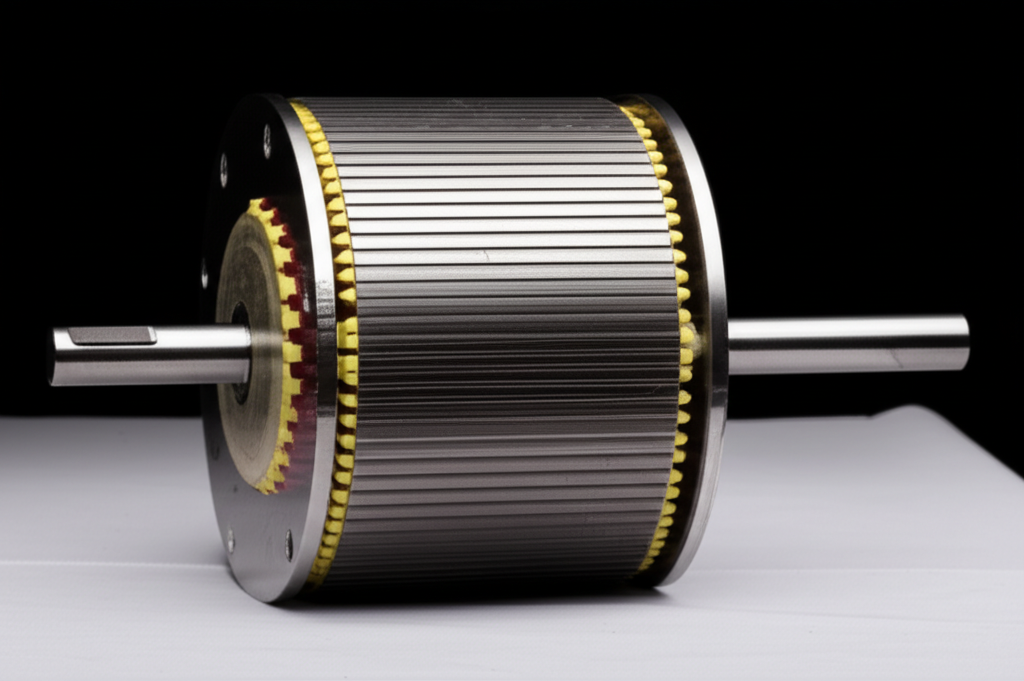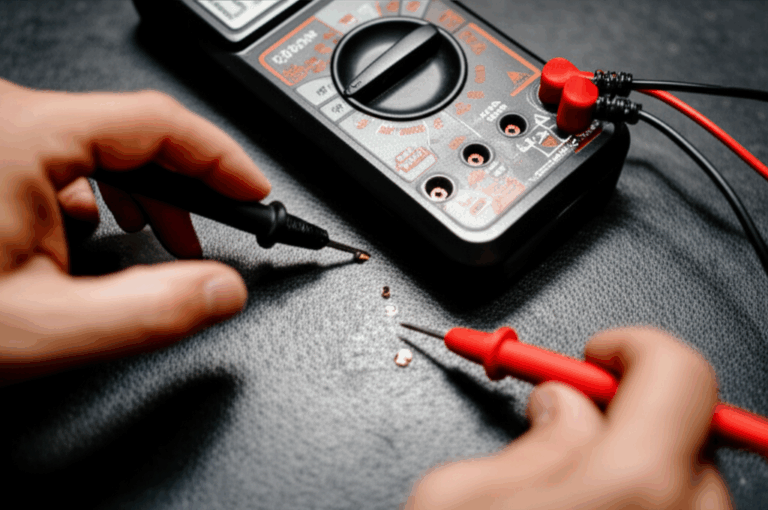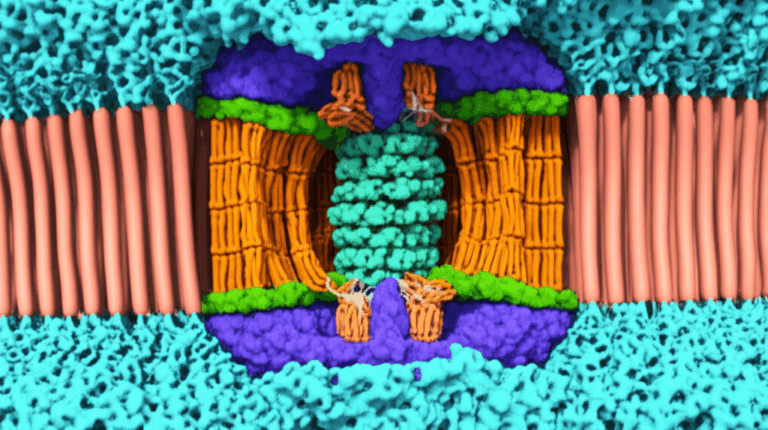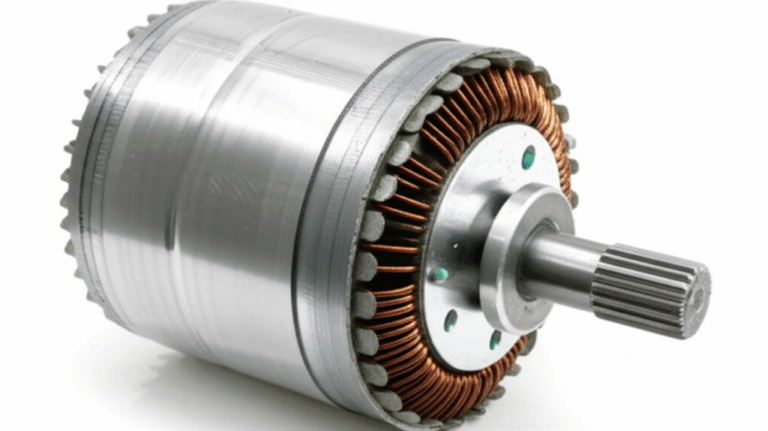
What is a Rotor and a Stator? Understanding the Core Components of Motors, Generators, and More
Short summary: In this guide, I explain what a rotor and a stator are in clear, simple words. You’ll see how they work in motors, generators, pumps, and more. I show you why they matter, how they make power, and how good parts cut heat and noise. If you want better machines and lower bills, this is worth your time.
Table of Contents
- Introduction: Why Rotor and Stator Matter Today
- What Is a Stator?
- What Is a Rotor?
- How Do They Work Together?
- Where Do You See Rotors and Stators Every Day?
- What Are the Key Differences?
- What Makes Motors Efficient?
- How Do Motors and Generators Use Rotors and Stators?
- What About Pumps, Compressors, and Turbines?
- How Do We Control Speed and Save Power?
- How Do You Care for These Machines?
- Buyer’s Guide: Pick Better Cores and Laminations
- Mini Reference: Simple Facts and Useful Terms
- FAQ
- Key Takeaways
- References
Introduction: Why Rotor and Stator Matter Today
Here’s the problem. Many people use motors and generators every day yet they can’t explain how they work. You flip a switch. The fan spins. The car moves. The fridge stays cold. Power flows in the wall. Still the parts inside stay a mystery.
Let’s agitate that a bit. When we don’t know the inside story, we make bad picks. We buy a cheap motor that runs hot. We lose energy as heat and noise. We pay more on bills. We face downtime and stress at work.
Here’s the solution. Learn the two core parts that run the show. The rotor spins. The stator stands still. Together they turn electrical energy into motion or motion into electrical energy. Once you see this simple dance, you can choose better parts and you can keep your machines healthy.
I’ve worked with engineers and plant teams. I’ve watched machines fail from small things like poor core lamination and weak motor windings insulation. I’ve also seen a small change in design fix heat, hum, and wear. You can do the same.
What Is a Stator?
The stator is the stationary heart of a motor or generator. It does not move. It makes or carries a magnetic field. It holds windings or magnetic poles. It sits in the frame or housing and it wraps around the spinning part.
Inside the stator you often see core laminations made from thin electrical steel. These steel sheets stack together to cut eddy currents and hysteresis losses. The coils and windings sit in slots in that core. They see electrical current flow and they make a strong field. Good thermal management in motors and strong motor windings insulation help the stator run cool and safe.
In an electric motor, the stator can hold three-phase power windings or single-phase power windings. In an alternator or generator, the stator often holds the output windings. The rotor then brings a changing field past the stator to make voltage generation. In pumps and compressors, the stator can be the body that guides fluid dynamics in pumps. It can shape the volute in a centrifugal pump or guide blades in an axial flow pump.
What Is a Rotor?
The rotor is the rotating workhorse. It spins on bearings and shafts. It pushes the load. In motors, the rotor turns electrical energy into mechanical energy conversion. In generators, the rotor takes motion from a prime mover like a turbine and makes a changing field for electromagnetic induction.
Rotors come in many types. A squirrel cage rotor uses aluminum or copper bars. A wound rotor uses windings and often slip rings. A permanent magnet rotor holds magnets that keep a set field. A rotor can be smooth or have salient poles. It can connect to a commutator in a DC motor. It can hold impellers in pumps and vanes in compressors. The shaft connects this motion to the gearbox internals, the clutch assembly, or a braking system.
Designers watch the air gap significance between rotor and stator. Too big and torque drops. Too small and parts rub. They also watch magnetic saturation, electrical resistivity, magnetic permeability, and dielectric strength for safe and strong fields.
How Do They Work Together?
Here is the simple core. The stator sets a field. The rotor sees that field and responds. Motion happens.
Two laws tell the story. Faraday’s Law of induction says a changing magnetic field makes voltage in a loop. Lorentz force says a current in a magnetic field feels a force. Put these together and you get torque in a motor. You also get voltage in a generator. Lenz’s law explains the direction of the induced current. It pushes back against the change that made it.
In an AC motor, the stator makes a rotating magnetic field. The rotor chases that field. In an induction motor, the rotor slips a bit. We call this slip in induction motors. In a synchronous motor, the rotor locks with the field at synchronous speed. In a DC motor, a commutator flips current in the rotor to keep torque in one direction.
Where Do You See Rotors and Stators Every Day?
You see them in home appliance motors like fans, refrigerators, washing machines, and vacuum cleaners. You see them in power tools design like drills and saws. You see them in HVAC system fans and refrigeration compressors. You see them in automotive electrical systems like starter motors and alternators. You see them in electric vehicles (EV) and hybrid vehicles. You even see them in medical imaging devices (MRI).
They also live in industrial machinery components, robotics, and industrial automation. They drive conveyor systems. They run large industrial motors in plants. They push marine propulsion systems and help with aerospace propulsion. In power generation, they sit in wind turbines, hydroelectric power plants, steam turbines, and gas turbines.
They even tie in with a transformer core world. The same care in core lamination helps both motors and transformers.
What Are the Key Differences?
- Motion: The rotor spins. The stator stays still. That is the big one.
- Connection: The rotor ties to the shaft and load. The stator ties to the frame or housing.
- Role: In a motor the rotor turns electricity into motion. The stator makes the field. In a generator the rotor makes the changing field and the stator gives you power out.
The table below keeps it simple.
| Aspect | Rotor | Stator |
|---|---|---|
| Motion | Rotates on bearings | Stays still in frame |
| Energy role | Motor: electrical to mechanical. Generator: mechanical to electrical | Motor: makes field. Generator: holds output windings |
| Key parts | Shaft, conductors, magnets, slip rings or commutator | Core laminations, windings, housing |
| Risks | Heat, frictional losses, vibration | Heat, insulation wear, iron losses |
| Care | Balance, lube bearings, align shaft | Check insulation, tighten slots, cool flow |
What Makes Motors Efficient?
Let’s get real about loss. Bad design leads to copper losses, iron losses, hysteresis losses, eddy currents, and frictional losses. Heat climbs. Life drops. Bills grow. That is a problem.
I’ve seen plants swap out low grade cores and save big. Thin, well-made core lamination sheets cut eddy currents. Clean slot fit helps flux linkage. Good steel keeps magnetic saturation in check. Tight air gap boosts torque production. Solid thermal management in motors drops heat and improves efficiency of motors. Smooth parts cut vibration analysis findings and improve noise reduction in motors.
If you build or buy motors, look at the core first. The quality of the stator core lamination sets the base for quiet and cool work. Pair that with a well matched rotor core lamination. For many designs you will see better output and longer life.
How Do Motors and Generators Use Rotors and Stators?
There are many types of electric motors. An induction motor is tough and simple. Stator windings make a moving field. The rotor sees that field and currents flow in the bars. The rotor lags a bit and that lag is slip. Torque appears. You get motion. That is induction motor function in plain words.
A synchronous motor runs locked to the stator field. It runs at synchronous speed. It can use a wound rotor or permanent magnets. Synchronous motor operation gives tight speed control. A DC motor uses a commutator and brushes. That is DC motor construction. AC motor working principle uses sinusoidal currents in the stator to produce a rotating field. A brushless DC motor (BLDC) swaps the commutator for electronics. It runs cool and quiet. If you work on BLDC projects, you will want to see the BLDC stator core laminations.
More special machines exist. A reluctance motor design uses rotor saliency to make torque. A stepping motor has clear steps for position control. Stepping motor internal parts look like a multi-tooth stator and rotor. Servo motor construction adds feedback for precise control. Linear motor operation lays a stator flat and slides the “rotor” over it.
Generators and alternators flip the story. You feed the rotor with motion from a turbine, an engine, or a wind turbine. The rotor field moves past the stator. This change makes voltage in the stator windings by electromagnetic induction. That’s power generation principles in action. Good alternator design keeps voltage tight and heat low.
What About Pumps, Compressors, and Turbines?
Not every rotor and stator pair uses magnetism. In pumps, the impeller is the rotor. It spins and throws water or oil. The casing or volute is the stator. It guides the flow. In a centrifugal pump, flow moves out by spin. In an axial flow pump, flow moves along the shaft.
In compressors, the spinning rotors trap air and squeeze it. The stator guides the air path and seals paths. In turbines, the turbine components include moving blades and fixed guide vanes. The fixed parts act like stators to steer flow. The moving blades act like rotors to pull energy from hot gas, steam, or water. That is true in steam turbines, gas turbines, and hydroelectric power units.
This is not magic. It is fluid dynamics at work. The idea stays the same. Rotating vs stationary parts. Together they shape and pass energy.
How Do We Control Speed and Save Power?
Plants save a lot with smart control. Variable frequency drives (VFD) change motor speed by changing the frequency to the stator windings. Lower speed when you can. That drops losses and noise. It helps power factor correction when done well.
You can also pick the right phase windings for three-phase power or single-phase power. Speed control gets easier with VFD on AC motors. DC drives can also help with DC motors. An AC motor can do soft starts and fast stops with the right drive. That cuts stress on the gearbox internals, clutch, and braking system components.
Watch your losses. Fix the air gap if you can. Check for magnetic saturation. Use the right steel. Many teams standardize on strong electrical steel laminations to keep flux high and loss low.
How Do You Care for These Machines?
Here are simple motor maintenance tips:
- Keep it clean and dry. Dust holds heat.
- Lube the bearings on schedule.
- Check vibration analysis reports. Fix misalignment.
- Keep windings tight in the slots.
- Test insulation. Replace if weak.
- Watch thermal management. Clear vents. Check fans.
For generator troubleshooting:
- Measure output voltage and frequency.
- Listen for noise. Rattle can mean bad bearings or rub in the air gap.
- Check brushes and slip rings if used.
- Look for hot spots. Heat points to copper losses or poor cooling.
If you run fleets, keep a log. Note efficiency changes. Look for patterns. Small fixes now prevent big hits later.
Buyer’s Guide: Pick Better Cores and Laminations
Here is the problem many buyers face. Cores look the same at a glance. Prices vary a lot. Specs can confuse.
Let’s agitate it. Poor laminations trap heat. They waste energy. They hum and buzz. They cut life. They cause iron losses and eddy currents. Your cost goes up month after month. Your team spends weekends fixing breakdowns.
Here is the solution. Buy high grade laminations from a trusted maker. Ask about steel grade, coating, thickness, and stamping. Ask about tolerance, burr height, and stack factor. Ask for data on loss vs flux. Ask for test reports.
Look at options like:
- Stator core lamination for AC and DC motors
- Rotor core lamination for cage and wound rotors
- Electrical steel laminations for low loss cores
- BLDC stator core laminations for brushless designs
Good suppliers support many shapes and sizes. They serve small electric motors and large industrial motors. They can support transformer core needs too. Some serve NEMA and IEC frame sizes. Some serve EV and robotics markets. Ask for proof. Ask for references. You will feel the difference when your machines run cool and quiet.
Mini Reference: Simple Facts and Useful Terms
Use this quick section as a study buddy. I keep the words short and clear. The terms below show up in your study or shop. They help you read spec sheets and talk with your team.
- Electric motor components: parts inside a motor like rotor, stator, windings, bearings, frame
- Generator parts: rotor, stator, exciter, bearings, housing
- How does a motor work: current in a field makes torque that turns a shaft
- Alternator design: rotor makes field and stator makes output AC
- Magnetic field generation: coils or magnets make the field
- Electromagnetic induction: changing field makes voltage by Faraday’s law
- Rotating vs stationary parts: rotor spins and stator stands still
- Power generation principles: motion and fields make power
- Types of electric motors: induction, synchronous, DC, BLDC, servo, stepper, reluctance, linear, universal
- Induction motor function: rotor currents from stator field make torque
- Synchronous motor operation: rotor locks to rotating field at set speed
- DC motor construction: rotor with commutator and brushes and a stator
- AC motor working principle: AC in stator makes a rotating field
- Turbine components: rotor blades and stator vanes guide flow
- Wind turbine parts: blades, hub, gearbox, generator, tower
- Pump design elements: impeller, casing, seals, shaft, bearings
- Compressor components: rotors, stators, seals, housing
- Magnetic poles: north and south poles in rotor or stator
- Coils and windings: copper wire loops in slots
- Electromagnetic forces: fields push on currents to make torque
- Torque production: twist on a shaft that does work
- Speed control: change speed with VFD or DC drive or gears
- Efficiency of motors: output power divided by input power
- Material science in motors: steel, copper, insulation, coatings
- Core lamination: thin stacked steel sheets to cut loss
- Air gap significance: small space between rotor and stator
- Bearings and shafts: support and transfer motion
- Housing and frame: support body of the machine
- Electrical current flow: electrons move in a wire
- Voltage generation: induced by changing magnetic flux
- Mechanical energy conversion: electrical to mechanical or the reverse
- Electrical energy conversion: mechanical to electrical or the reverse
- Applications of motors: fans, pumps, tools, robots, EVs
- Applications of generators: power plants, backup power, wind
- Fundamental motor theory: fields, current, torque, speed
- Electromagnetic fields: space with magnetic and electric effects
- Lorentz force: force on a current in a magnetic field
- Faraday’s law of induction: changing flux makes EMF
- Lenz’s law: induced current opposes the change
- Flux linkage: link between coils and magnetic flux
- Squirrel cage rotor: bars and rings form a cage
- Wound rotor: rotor with windings you can connect
- Salient pole stator: poles stick out in the core
- Non-salient pole stator: smooth core with slots
- Permanent magnet rotor: magnets on the rotor
- Reluctance motor design: torque from rotor saliency
- Stepping motor internal parts: toothed rotor and stator
- Servo motor construction: motor with feedback and control
- Linear motor operation: flat motor that makes straight motion
- Transformer core: steel laminations for magnetic flux
- Brushless DC motor (BLDC): DC motor with electronic commutation
- Universal motor diagram: motor that runs on AC or DC
- Motor maintenance tips: clean, lube, test, tighten, cool
- Generator troubleshooting: test voltage, check brushes, inspect bearings
- Hydroelectric power plant: water turns a turbine and makes electricity
- Steam turbine principle: steam spins blades to drive a generator
- Gas turbine components: compressor, combustor, turbine
- Pump impeller: spinning blade that moves fluid
- Fluid dynamics in pumps: physics of fluid flow
- Centrifugal pump: flow goes out by spin
- Axial flow pump: flow moves along the axis
- Piston engine operation: pistons turn a crank in an internal combustion engine
- Internal combustion engine parts: pistons, valves, crankshaft, block
- Engine block vs crankshaft: block holds parts and crankshaft turns
- Gearbox internals: gears change speed and torque
- Clutch assembly: connects and disconnects power
- Braking system components: pads, discs, calipers
- Automotive electrical systems: battery, alternator, starter, wiring
- Industrial machinery components: motors, drives, sensors, frames
- Aerospace propulsion: engines push aircraft forward
- Marine propulsion systems: propellers and drives move boats
- HVAC system fans: move air for heat and cool
- Refrigeration compressors: compress refrigerant to cool
- Medical imaging devices (MRI): strong magnets and rotating parts
- Power tools design: motors, gears, grips
- Home appliance motors: simple motors in house devices
- Small electric motors: low power units
- Large industrial motors: high power units for plants
- Motor windings insulation: protects coils from heat and voltage
- Thermal management in motors: cooling fans, fins, fluids
- Vibration analysis: study motion to find faults
- Noise reduction in motors: design and materials to cut sound
- Power factor correction: improve the phase of current vs voltage
- Variable frequency drives (VFD): control speed with AC frequency
- Direct current (DC): one way current
- Alternating current (AC): current that changes direction
- Magnetic saturation: flux max in steel
- Eddy currents: loops in steel that waste energy
- Hysteresis losses: energy lost when magnetizing steel
- Copper losses: I²R losses in windings
- Iron losses: core losses in steel
- Frictional losses: bearing and air drag
- Synchronous speed: speed of the rotating field
- Slip in induction motors: rotor lag from the field
- Phase windings: coils for each phase
- Three-phase power: three AC waves offset by 120°
- Single-phase power: one AC wave
- Electrical resistivity: how well a material resists current
- Magnetic permeability: how well a material carries flux
- Dielectric strength: how well insulation resists breakdown
FAQ
- What is the simplest way to explain rotor and stator? The stator makes the field and the rotor moves in that field. Together they turn power into motion or motion into power.
- Why do laminations matter? Thin sheets cut core losses and heat so motors last longer and run quieter.
- Is a BLDC motor AC or DC? It uses DC supply but the inverter makes AC-like waveforms for the stator. The commutation is electronic.
- Why do induction motors slip? The rotor must lag to induce current and make torque.
Key Takeaways
- The stator stays still and makes or carries the magnetic field. The rotor spins and makes torque or voltage.
- Good materials and smart design cut heat and noise. They boost efficiency and life.
- Use VFDs for speed control. Watch power factor and losses.
- Maintain bearings, windings, and cooling. Small fixes prevent big failures.
- Pick high grade laminations for rotors and stators. They are the backbone of strong motors and generators.
References
- IEEE. “Electric Machines and Drives.” IEEE Xplore. https://ieeexplore.ieee.org
- NEMA MG 1. “Motors and Generators.” National Electrical Manufacturers Association. https://www.nema.org
- IEC 60034 Series. “Rotating Electrical Machines.” International Electrotechnical Commission. https://www.iec.ch
- Halliday, Resnick, and Walker. Fundamentals of Physics. Sections on Faraday’s Law and Lorentz Force.
- HyperPhysics. “Faraday’s Law” and “Lenz’s Law.” http://hyperphysics.phy-astr.gsu.edu
Bold promise in plain talk: pick better cores and care for your machines and they will pay you back day after day.








